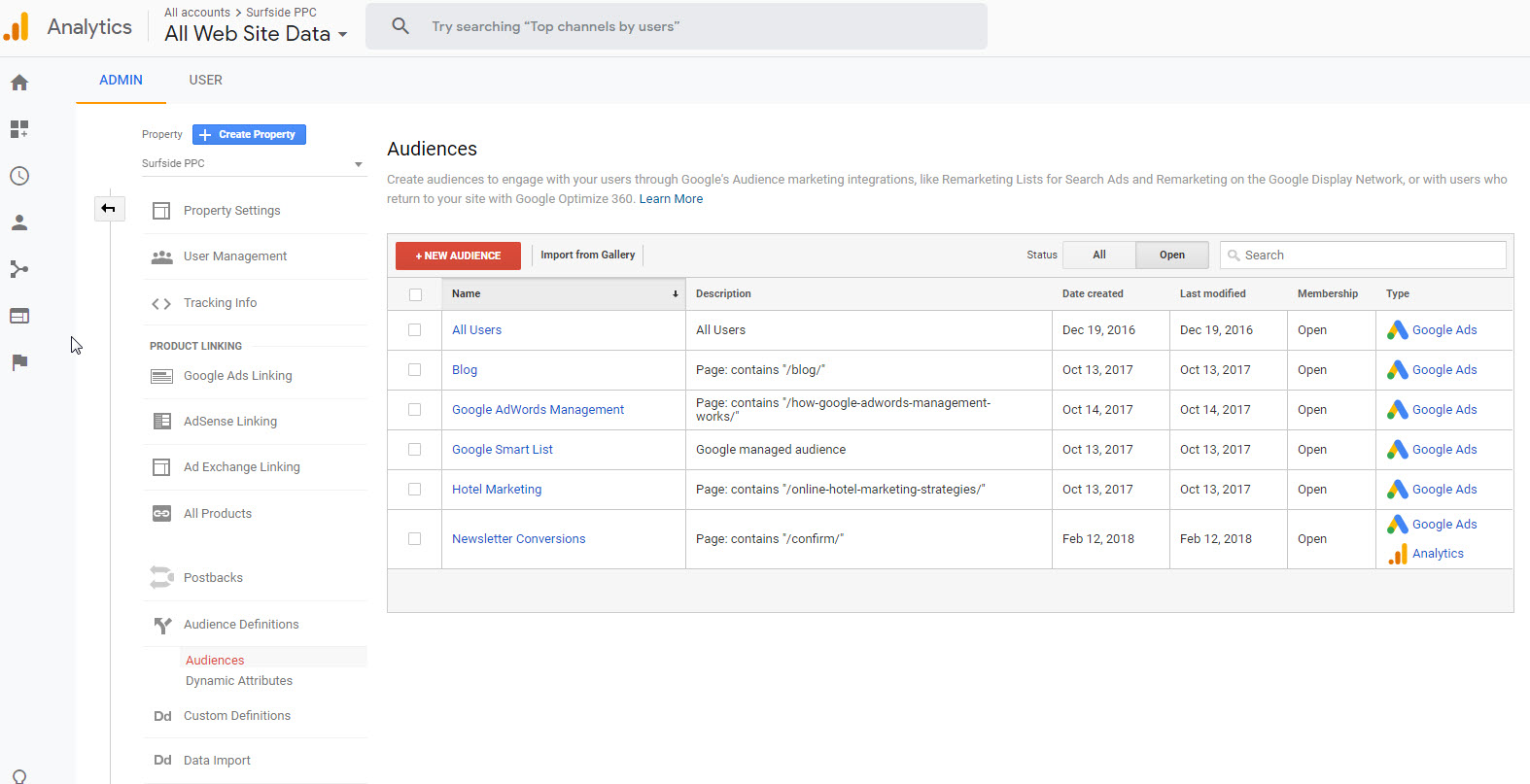Taking Advantage Of Remarketing in Google Analytics: A Comprehensive Overview
Harnessing remarketing in Google Analytics provides organizations a critical edge in reaching out to possible customers. This guide will lose light on the crucial steps entailed in taking advantage of the full possibility of remarketing in Google Analytics, leading to enhanced advertising and marketing results.
Recognizing Remarketing in Google Analytics
Remarketing in Google Analytics permits companies to tactically target customers who have formerly engaged with their internet site or mobile application. By leveraging data from Google Analytics, businesses can create personalized remarketing listings based on individual actions, such as pages seen, activities taken, or details goals accomplished. This powerful device enables organizations to re-engage with users that have actually shown interest in their services or products, inevitably raising the likelihood of conversion.
Understanding the different kinds of remarketing techniques is essential for a successful project - What Is “Remarketing” In Google Analytics?. Google Analytics offers numerous choices, consisting of common remarketing, dynamic remarketing, and remarketing listings for search ads (RLSA) Each type offers an unique function and can be tailored to meet certain marketing purposes
Additionally, assessing the performance of remarketing campaigns is important for maximizing outcomes. Google Analytics provides important understandings right into the effectiveness of various remarketing approaches, enabling services to make data-driven choices and improve their targeting approach. By continuously keeping track of and readjusting remarketing initiatives based on analytics data, businesses can make best use of ROI and drive success in their advertising initiatives.
Establishing Remarketing Campaigns

After establishing audience checklists, the next action is to link Google Analytics with Google Advertisements. By connecting these 2 platforms, organizations can seamlessly transfer audience listings from Google Analytics to Google Advertisements for remarketing purposes. This assimilation permits even more accurate targeting and far better project performance.
Once the accounts are linked, companies can develop remarketing projects in Google Advertisements utilizing the audience lists previously defined in Google Analytics. These campaigns can be tailored with details advertisement creatives, messaging, and bidding strategies to efficiently re-engage with past site visitors and drive conversions. By adhering to these steps, companies can utilize the power of remarketing to improve their advertising efforts and enhance ROI.
Making Use Of Audience Segmentation Methods

Predefined segments in Google Analytics enable you to quickly assess common target market groups fresh customers, returning customers, or users who finished a certain objective on your web site. Custom segments, on the other hand, enable you to produce special segments based upon specific criteria that are essential to your service goals. Dynamic remarketing checklists immediately readjust based on user habits, revealing personalized advertisements to users that have interacted with your website particularly means.
Studying Remarketing Performance Metrics
Upon resource examining the effectiveness of remarketing campaigns in Google Analytics, the evaluation of vital performance metrics provides valuable understandings right into target market involvement and conversion rates. By delving into metrics such as click-through rates (CTR), conversion rates, expense per purchase (CPA), and return on advertisement invest (ROAS), marketing professionals can gauge the success of their remarketing efforts. CTR indicates the percent of users who clicked the ad after watching it, reflecting the advertisement's importance and charm. Conversion prices determine the portion of users who completed a desired action, such as buying, after clicking on the ad. CPA discloses the average price sustained for each conversion, aiding assess campaign earnings. ROAS, on the various other hand, measures the earnings produced for every buck spent on marketing. Assessing these metrics makes it possible for marketing experts to optimize projects, refine target market targeting, and assign budget plans successfully to improve overall remarketing performance.
Enhancing Remarketing Strategies
When refining remarketing techniques in Google Analytics, concentrating on target market segmentation is vital for accomplishing campaign success. By splitting your target market into particular segments based on their behavior, demographics, or passions, you can tailor your advertisements better to each group. This targeted strategy raises the chance of engaging individuals who have currently shown rate of interest in your services or products, leading to greater look here conversion rates.
One more vital element of maximizing remarketing techniques is constantly testing and refining your campaigns (What Is “Remarketing” In Google Analytics?). A/B screening various ad creatives, messaging, or deals can assist you identify what resonates ideal with your audience and drives the most conversions. By examining the efficiency of these tests in Google Analytics, you can make data-driven decisions to enhance your remarketing efforts even published here more
Moreover, leveraging vibrant remarketing can significantly improve your campaign results. This attribute allows you to reveal customized ads to customers based on their past communications with your web site, showcasing solutions or products they have actually previously seen. By providing tailored content to users based upon their rate of interests and habits, dynamic remarketing can help boost interaction and drive conversions.
Verdict
In verdict, using remarketing in Google Analytics is a critical method to target users who have actually previously engaged with a website. By producing customized audience checklists and using target market division methods, services can maximize remarketing advocate increased conversion prices. Analyzing efficiency metrics and continually enhancing approaches are crucial for maximizing the effectiveness of remarketing initiatives.
Google Analytics supplies various options, including basic remarketing, vibrant remarketing, and remarketing lists for search advertisements (RLSA)After establishing up target market checklists, the next step is to connect Google Analytics with Google Advertisements. By connecting these 2 platforms, businesses can perfectly transfer audience lists from Google Analytics to Google Ads for remarketing purposes.Once the accounts are connected, businesses can create remarketing campaigns in Google Ads utilizing the target market details previously specified in Google Analytics.When refining remarketing methods in Google Analytics, concentrating on audience division is paramount for accomplishing campaign success.